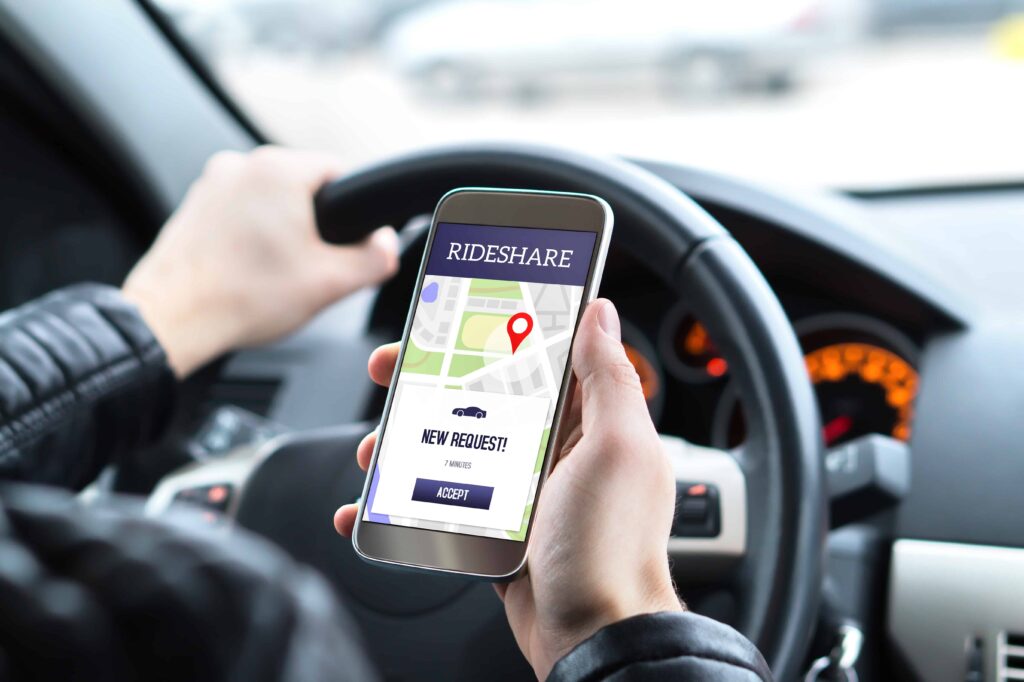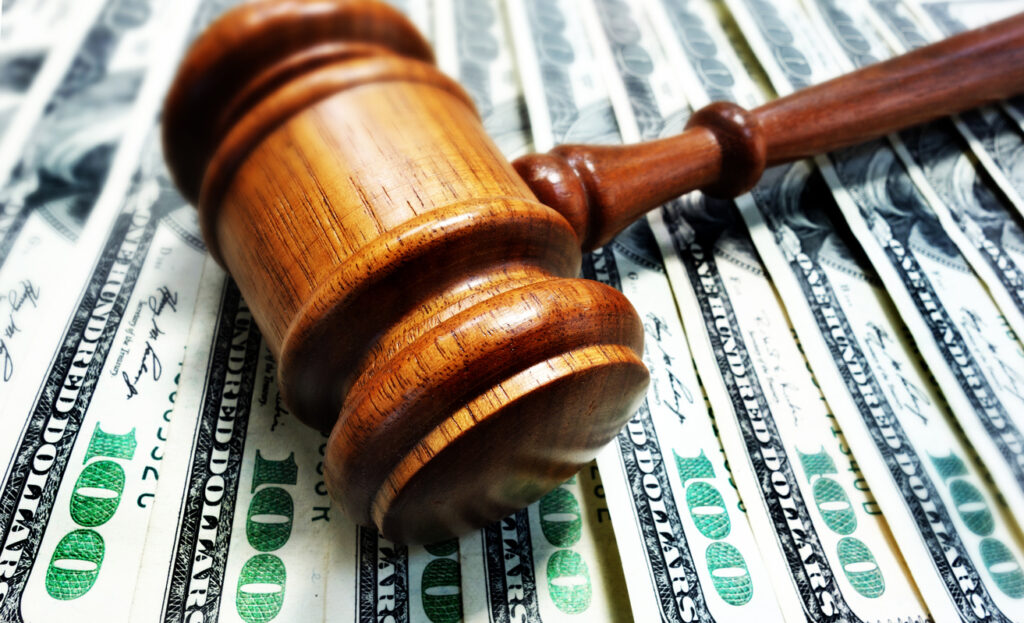If a rideshare app malfunctioned—sending the driver the wrong way down a one-way street, freezing at a critical moment, or issuing a faulty GPS instruction—and that glitch led directly to your accident, the path to compensation becomes way more complex than a typical car crash claim.
You may have a claim against not only the driver but also the powerful rideshare company and potentially the app's developers. Proving that a software glitch was the direct cause of the crash requires a different kind of evidence than a typical car accident claim, focusing on digital forensics, app performance data, and reports of similar technical failures.
This situation falls into a complicated area where personal injury law meets product liability law. The goal is to secure compensation for your medical bills, lost income, and pain by demonstrating that a defective "product"—the app—led to your injuries.If you have a question about an accident involving a rideshare app, call our Rideshare accident lawyers at (623) 303-5754.
Beyond Driver Error: Who Is Legally Responsible When a Rideshare App Fails?
In a standard car crash, you look at the drivers involved to determine fault. But when an app's failure is a factor, the lines of responsibility blur. The driver was steering the car, but was the app giving them faulty directions that a reasonable person might have followed? The rideshare company might point its finger at the driver, the driver could blame the app, and you are left wondering who is actually accountable for your injuries while medical bills start to arrive.
In these situations, legal responsibility could lie with one or more parties. We examine all potential sources of liability to build a comprehensive case.
Potential Liable Parties
- The Rideshare Driver: Every driver has a duty of care to operate their vehicle safely, regardless of what a screen tells them. We would investigate whether the driver should have recognized the app's error and ignored its instruction. For example, if the GPS told them to make an illegal turn into oncoming traffic, a competent driver should know to disobey that command. Their failure to use reasonable judgment could make them partially or fully at fault.
- The Rideshare Company (Uber/Lyft): As the provider of the technology, the company is responsible for ensuring its app is safe and functional. Their liability could stem from several areas:
- Negligence: This legal concept applies if the company knew about a bug or glitch but failed to issue a patch or warning in a timely manner. If other drivers had reported the same issue and the company did nothing, it could be argued they failed in their duty to protect users.
- Vicarious Liability: In some situations, a company can be held responsible for the actions of its workers. The debate over whether rideshare drivers are employees or independent contractors is ongoing, but this classification doesn't automatically shield the company from all responsibility for a crash.
- The App or Software Developer: This might be the rideshare company's in-house team or a third-party developer. Under the principles of product liability, if a piece of software is defective and causes harm, its creator may be held responsible. This sometimes falls under strict liability, a standard where you don't have to prove they were negligent—only that the product was defective and your injury directly resulted from that defect.
How Arizona Law Applies
In Arizona, the law specifically defines the responsibilities of Transportation Network Companies (TNCs), the legal term for services like Uber and Lyft. Arizona Revised Statute § 28-9551 et seq. outlines insurance requirements that change depending on the driver's status at the time of the crash.
The applicable insurance coverage varies based on whether the driver was waiting for a ride request, en route to pick up a passenger, or actively transporting a passenger. We carefully examine these distinct periods to determine which insurance policy or combination of policies applies to your specific situation.
How Do You Actually Prove an App Glitch Caused the Crash?

Unlike a skid mark on the pavement or a broken traffic light, digital evidence is invisible and can be difficult to obtain and interpret.
Gathering the Digital Evidence
The first step is to preserve and collect all available electronic data before it can be deleted or overwritten.
- Driver and Passenger App Data: We would seek to obtain the ride data from both your phone and the driver's phone. This information can show the intended route, the actual route taken, vehicle speed, and any app-based communications or alerts that occurred in the moments leading up to the crash.
- Electronic Data Recorder (EDR): Many modern vehicles are equipped with an "EDR," also called a "black box." This device records critical data in the seconds just before and after a collision, such as speed, braking, steering inputs, and acceleration. We’ll compare this physical data with the app's digital instructions to identify any conflicts or discrepancies that point to a glitch.
- Rideshare Company Records: Through legal channels, we can demand that the rideshare company provide its internal records. This includes data related to the driver, the specific ride in question, and any known issues or bug reports for the app version that was in use at the time of the crash. These records could reveal if the company was already aware of a potential problem.
Looking for Patterns and Corroboration
A single incident might be dismissed as a fluke. A pattern of failure is much harder to ignore.
- Public Reports and Forums: Our investigation includes researching online forums like Reddit, news articles, and other lawsuits to see if other users have reported similar glitches with the app. A pattern of complaints—for example, a known issue where a GPS update causes cars to brake suddenly or lose signal in a specific area—serves as corroborating evidence.
- Expert Witnesses: We may work with software engineers or digital forensics analysts. These professionals can analyze the app's code, performance logs, and the data we've collected. They then provide an expert opinion on whether a software glitch was the likely cause of the malfunction that led to your accident.
The final step is to synthesize all this information to link the technical failure directly to the physical accident. For instance, we could show that the app's GPS erroneously placed the vehicle on a parallel road, causing the driver to make a sudden, unexpected turn that resulted in the collision.
What Kinds of Compensation Can You Pursue?

When you are injured because of a faulty rideshare app, the purpose of a legal claim is to recover funds that help you address the physical, financial, and emotional harm you've suffered. This compensation, which is legally referred to as "damages," acknowledges that the accident inflicted real losses that extend far beyond the initial hospital visit.
The compensation we pursue is typically broken down into several distinct categories.
Economic Damages
These are the tangible, calculable financial losses you have incurred and will continue to incur because of the accident. They are documented with bills, receipts, and financial statements.
- All Medical Expenses: This includes everything from the initial ambulance ride and emergency room visit to any future surgeries, physical therapy, medications, assistive devices, and necessary long-term care.
- Lost Wages: This is compensation for the income you lost while you were unable to work during your recovery.
- Loss of Future Earning Capacity: If your injuries are severe enough to prevent you from returning to your previous job or limit your ability to earn an income in the future, you may be compensated for this long-term financial loss.
Non-Economic Damages
These losses are intangible but are just as real and damaging as the financial ones. They compensate you for the human cost of the accident.
- Pain and Suffering: This is for the physical pain and emotional distress caused by your injuries and the traumatic experience of the crash itself.
- Loss of Enjoyment of Life: If your injuries prevent you from participating in hobbies, activities, or life experiences you once enjoyed—from playing with your children to engaging in a favorite sport—this seeks to compensate for that loss.
Don't Wait: Why Arizona's Deadlines Are Important

After a traumatic event like a car crash, it is completely understandable to feel like you need time to process what happened. However, the law places a strict time limit on your right to file a lawsuit. This deadline is known as the statute of limitations, and it is not flexible.
In Arizona, you generally have two years from the date of the injury to file a personal injury claim. This is outlined in Arizona Revised Statute § 12-542. If you miss this two-year window, the court will almost certainly refuse to hear your case, and you will permanently lose your right to seek compensation for your injuries.
Two years may seem like a long time, but it passes quickly. Building a case that involves a technology company requires a significant amount of time for investigation, evidence gathering, and consultation with experts.
Frequently Asked Questions About Rideshare App Accidents
What if the rideshare driver and I disagree on what the app did?
Disagreements about the events leading up to a crash are common. This is precisely why we rely on objective digital evidence rather than just memory. By analyzing data logs from the app, information from the vehicle's EDR, and any available third-party sources like traffic cameras, we construct a factual timeline of what happened, independent of conflicting recollections.
Does it matter if I was in an Uber or a Lyft?
While both companies are governed by the same state and federal laws, their internal policies, app technologies, and insurance carriers can differ. We handle cases involving all major rideshare platforms and are familiar with the specific procedures and corporate structures of each. This allows us to tailor our legal strategy to the company involved in your accident.
Will my claim take longer than a typical car accident case?
It might. Cases that involve elements of product liability and corporate defendants often require a more extensive investigation, including demands for internal company documents and the hiring of technical experts. This can extend the timeline compared to a straightforward collision between two private drivers. Our role is to manage this process efficiently while ensuring we build the strongest and most thorough case possible on your behalf.
What if the glitch was minor, but the driver overreacted and caused the crash?
This is a question of comparative fault. It is possible for both the app developer and the driver to share a percentage of the responsibility. Arizona is a "pure comparative negligence" state, which means you can still recover damages even if you are found to be partially at fault. Your total compensation would simply be reduced by your percentage of fault. Our job is to demonstrate how the app's glitch was the primary trigger for the entire incident, minimizing any fault attributed to other parties.
Can I handle this directly with Uber or Lyft's insurance?
You can, but it is important to remember that insurance companies for large corporations are focused on protecting their business's financial interests. A claim involving a complex issue like a software defect is not straightforward. Their initial settlement offers may not account for the full scope of your long-term damages or the complex liability of the technology company itself. Having experienced legal representation ensures you are on a level playing field.
Let Us Untangle the Technology and Fight for You
When technology fails and causes you harm, you shouldn't be the one left to pay the price. We have years of experience handling complex accident claims, and we are ready to hold the responsible parties accountable.
For a clear explanation of your options, call Kurtz Riley Law Group today at (623) 303-5754.
Kurtz Riley Injury Lawyers - Scottsdale Office
10609 Hayden Rd Suite 106
Scottsdale, AZ 85260
(623) 303-5754